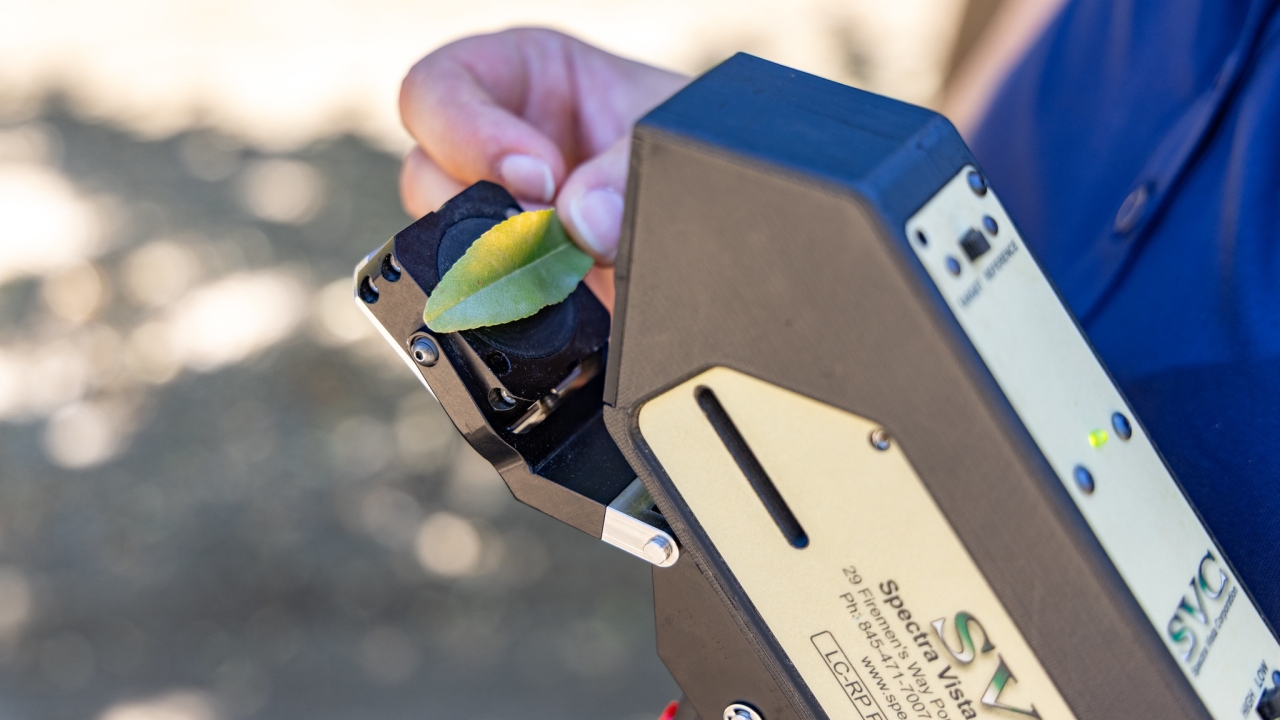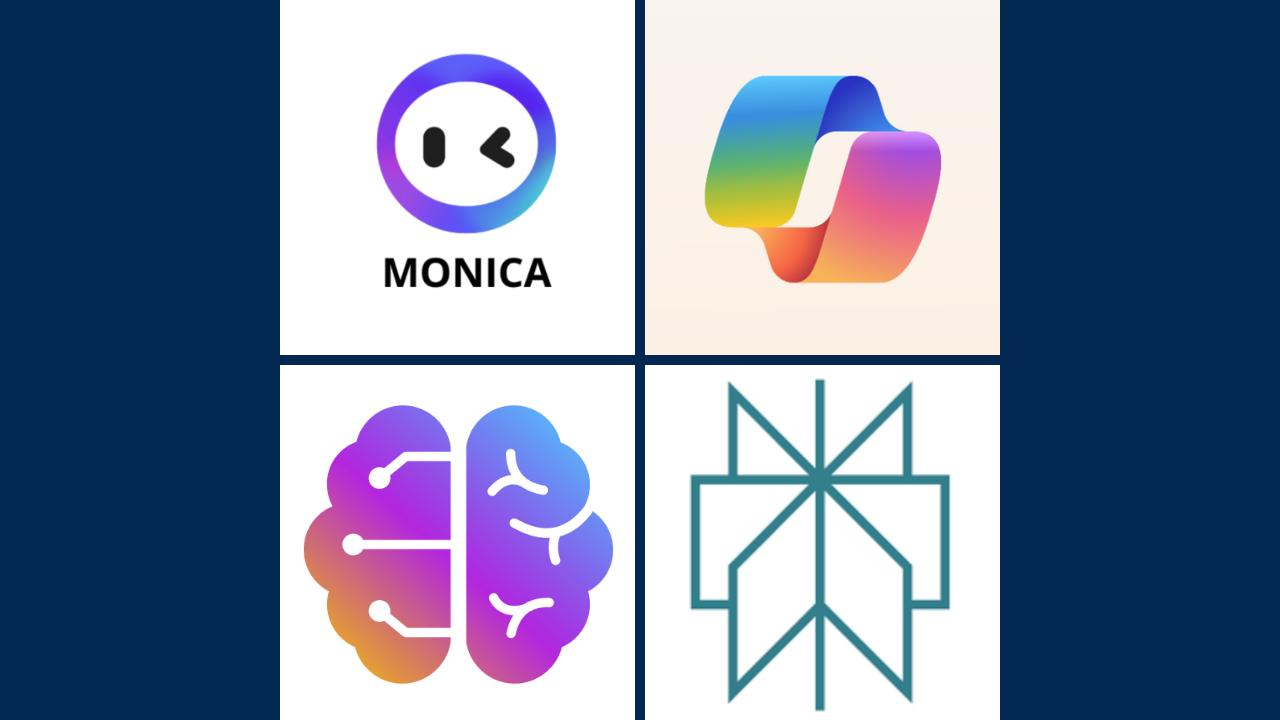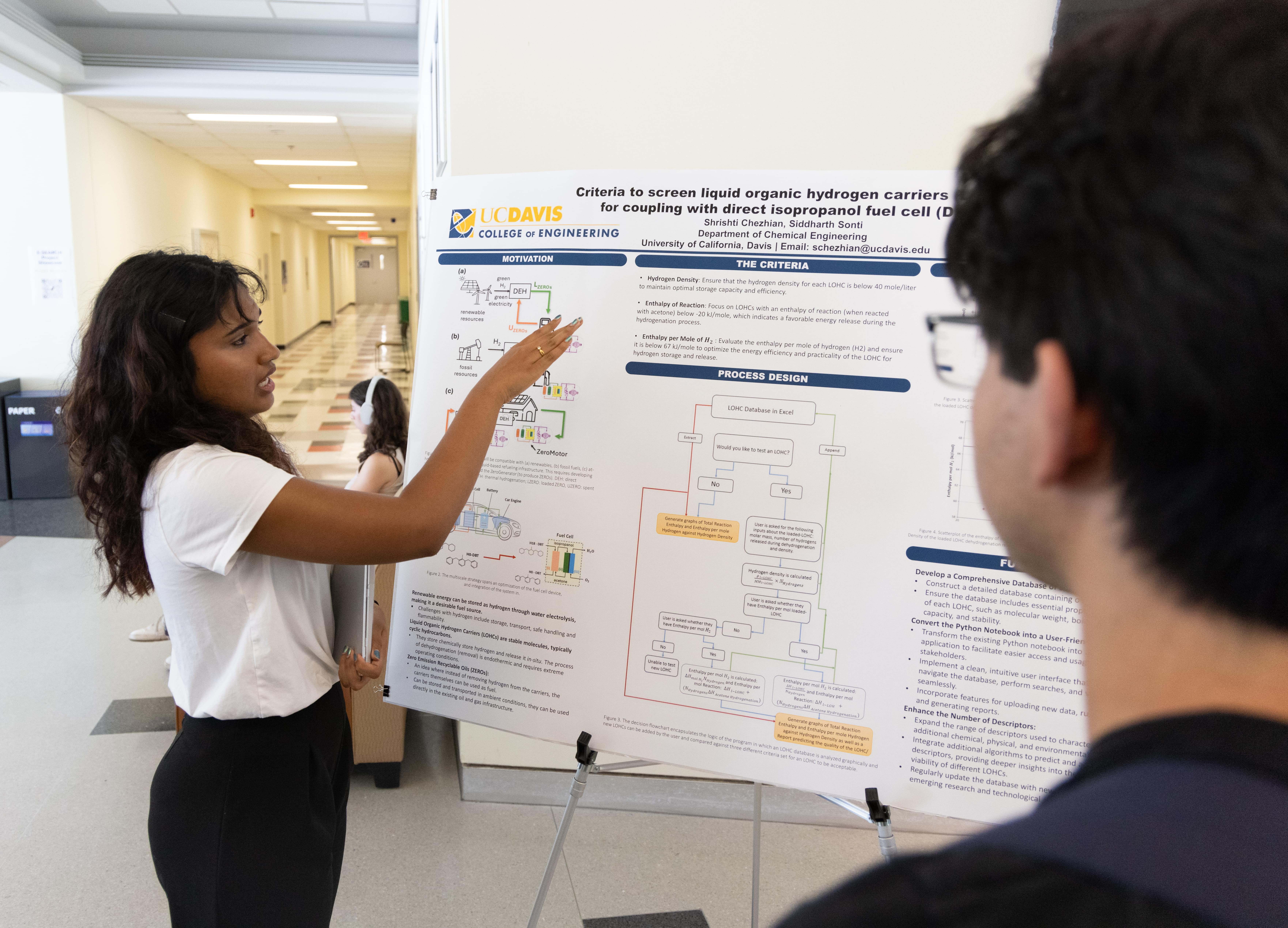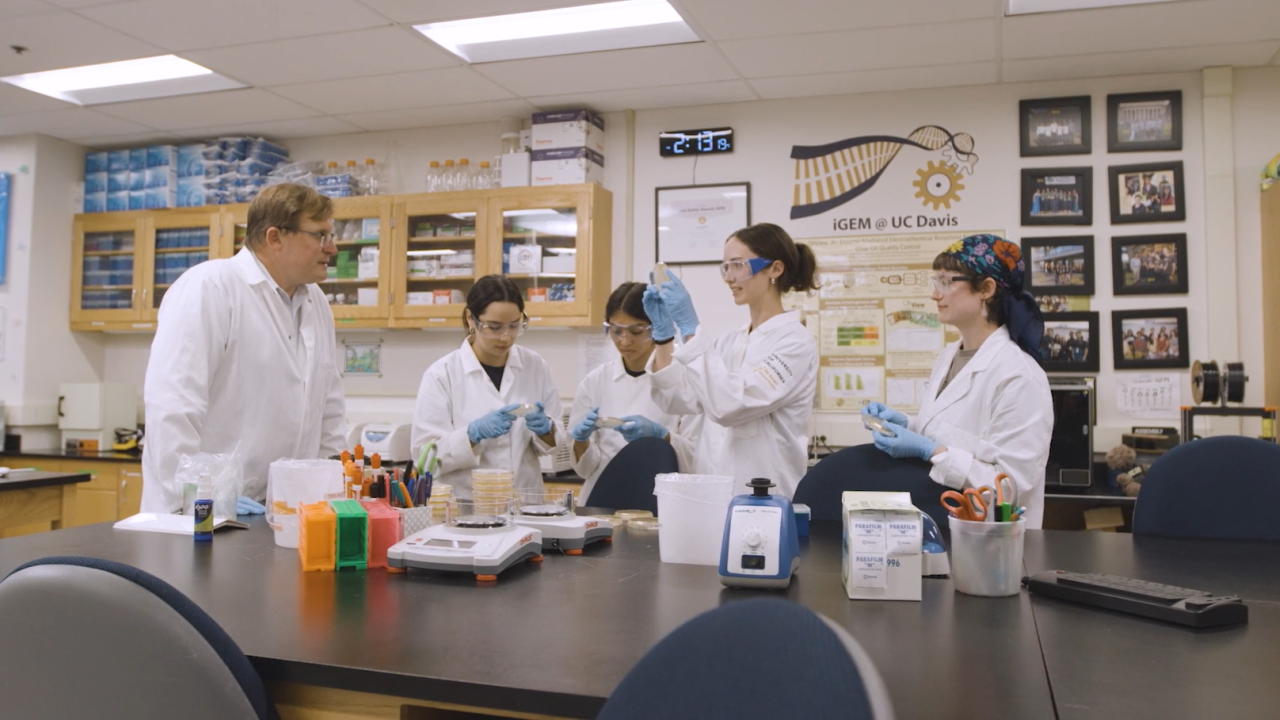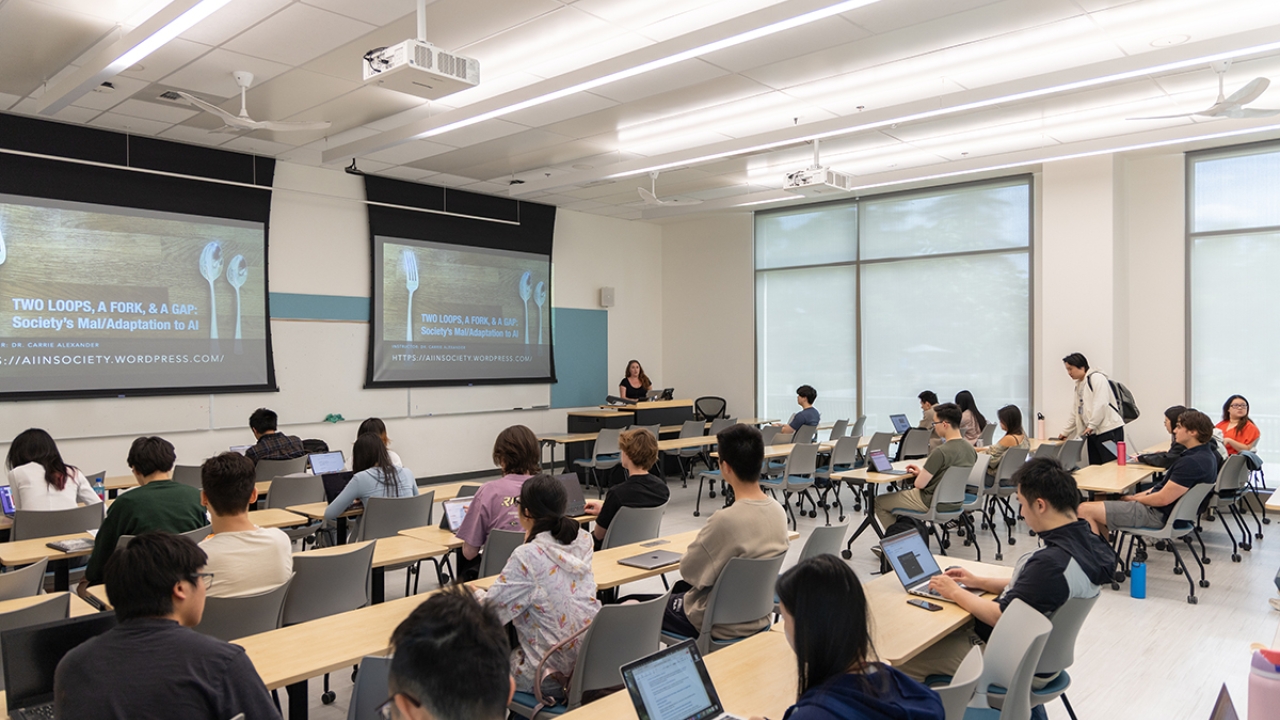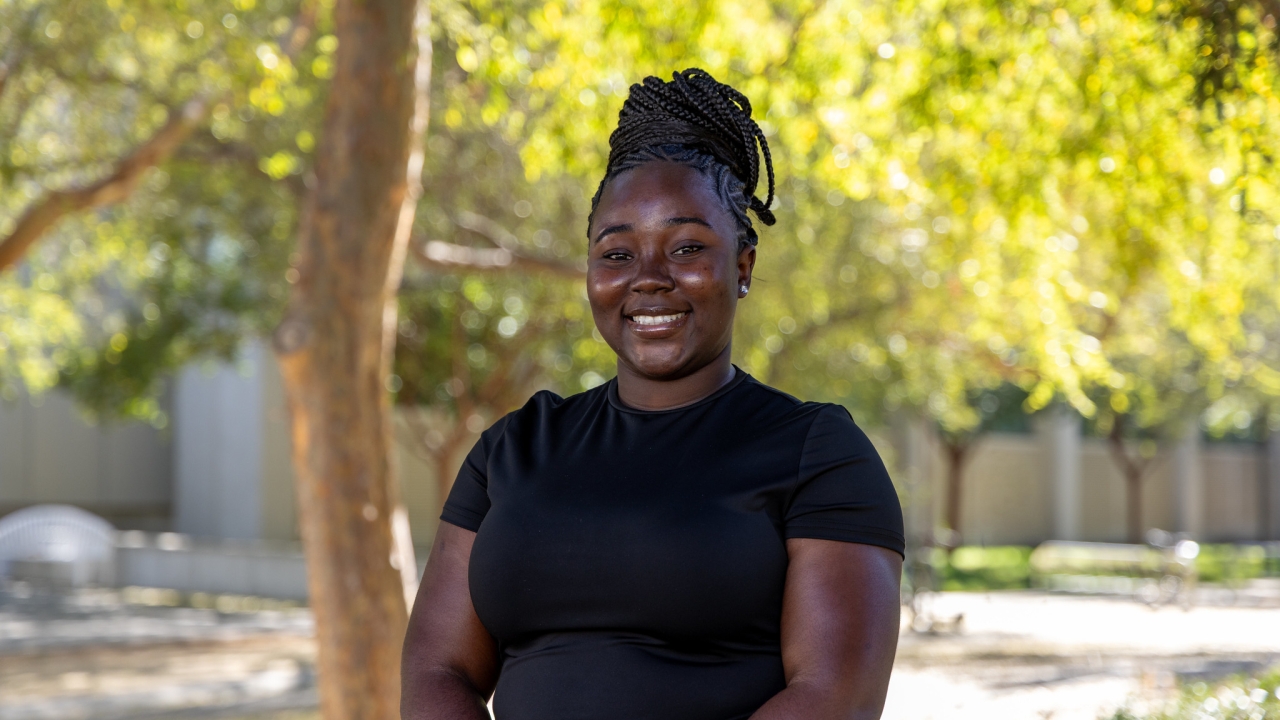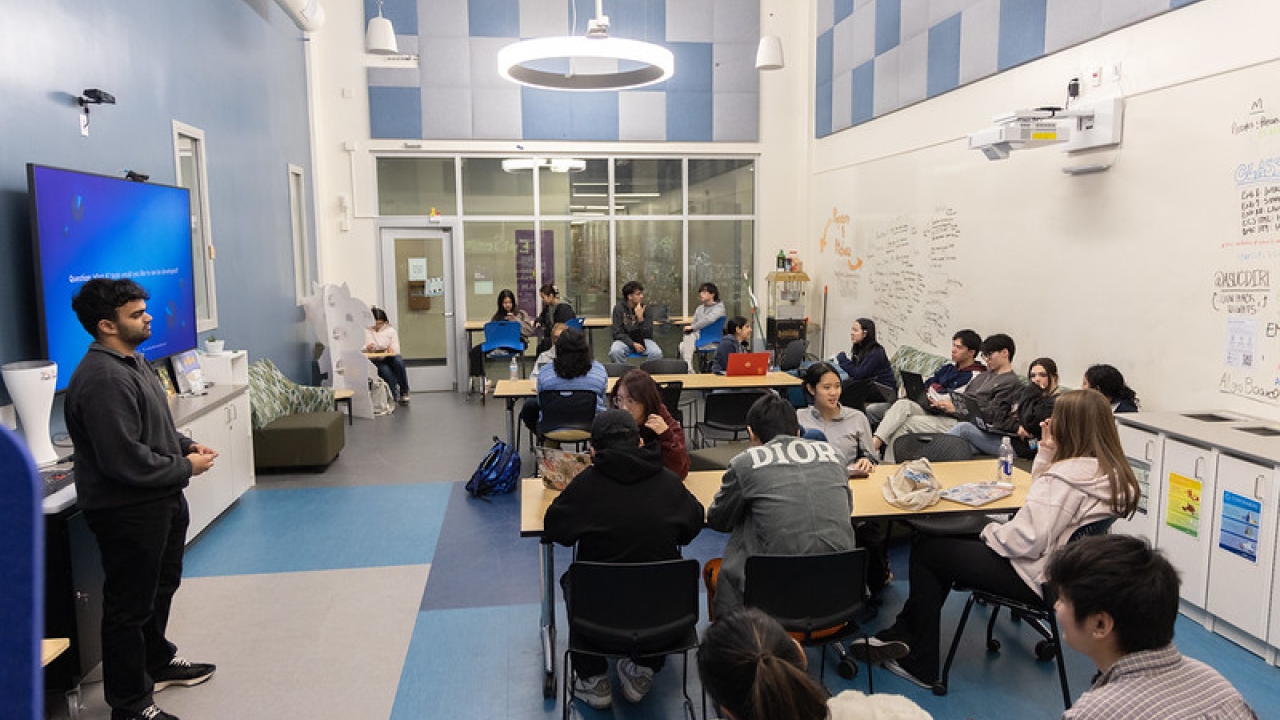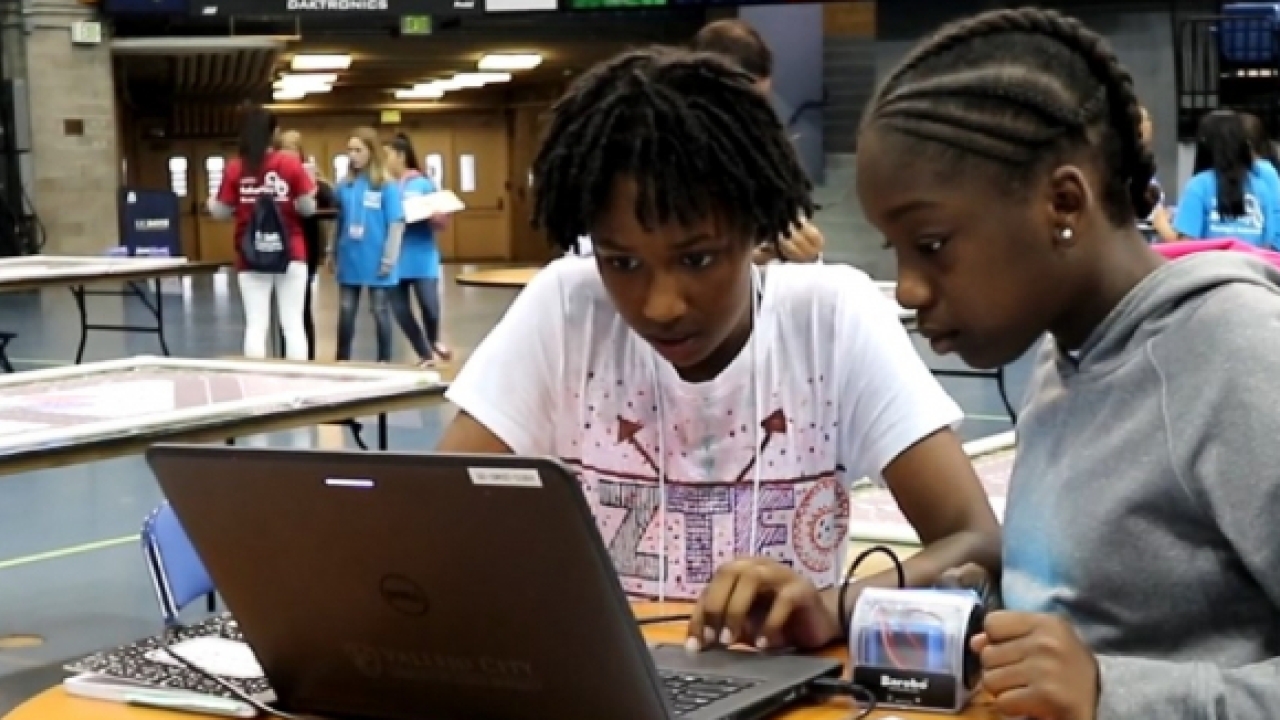Engineering for All
Research
Bezos Earth Fund Grants $2M to UC Davis and American Heart Association to Advance AI-Designed Foods
Team Develops AI Tool to Measure Real-Time Crop Health from the Field
Big Help or Big Brother? UC Davis Study Reveals Alarming Browser Tracking
Education
New Program to Prepare Local High School Students for Leadership in Biotechnology
Bright STARSE on the Horizon: UC Davis-Led Program Rethinks STEM Education
UC Davis College of Engineering Launches 2 New Courses in AI
Featured Organizations and Programs
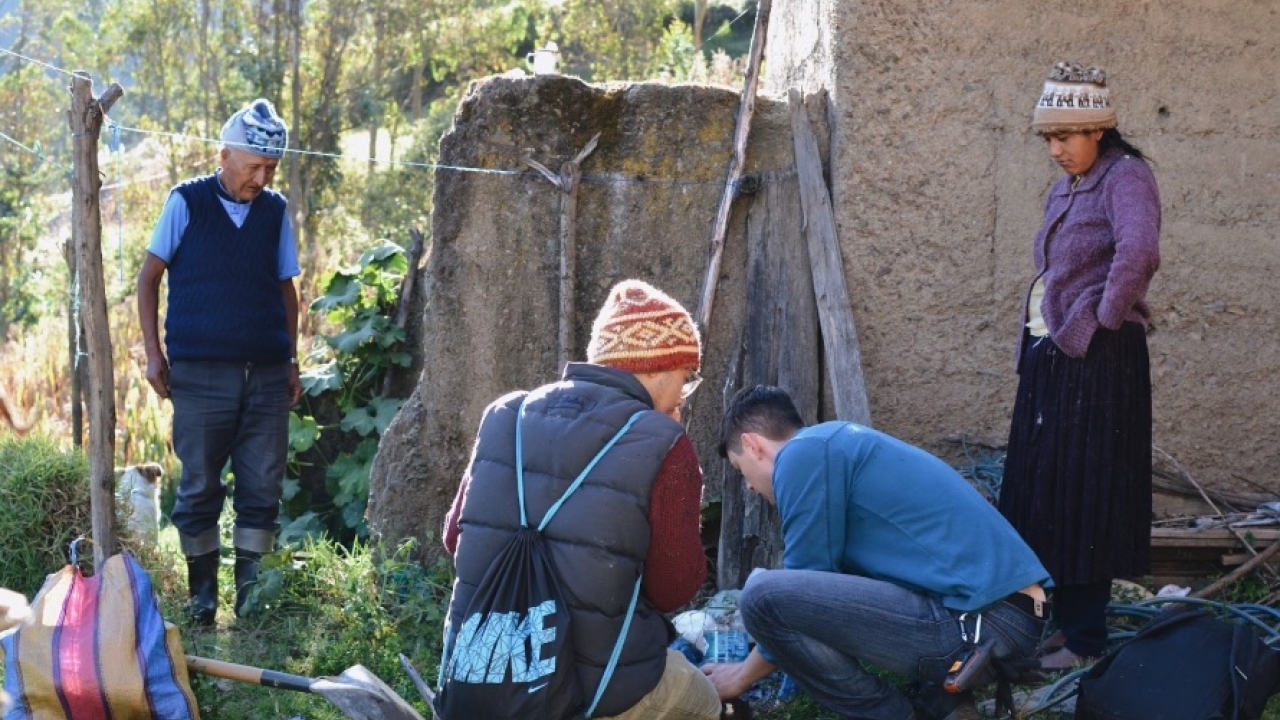
Engineers Without Borders
EWB partners with international communities who have expressed a need for a vital resource, such as access to safe drinking water. The organization helps developing areas with their engineering needs while involving and training internationally responsible engineering students.
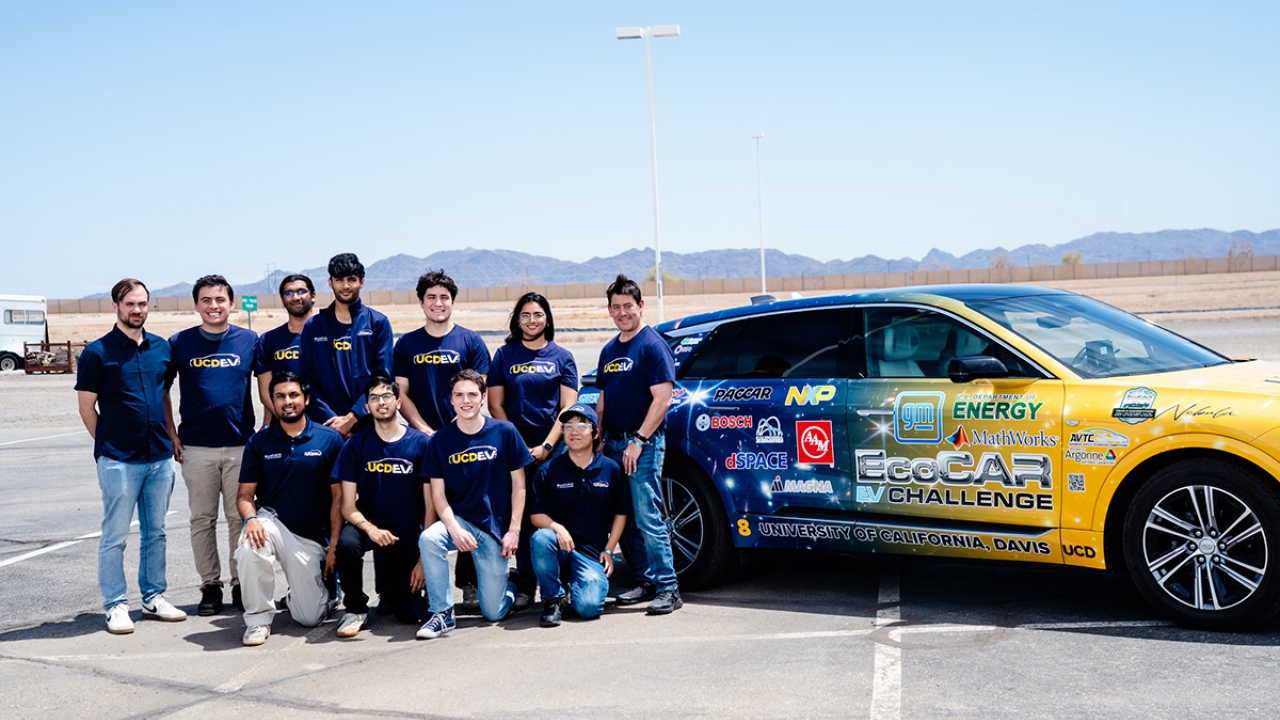
EcoCAR
The EcoCAR EV Challenge is a four-year collegiate automotive engineering competition in which students are tasked with re-engineering a Cadillac LYRIQ to improve energy efficiency, incorporate advanced automation, and promote accessibility of sustainable transportation.
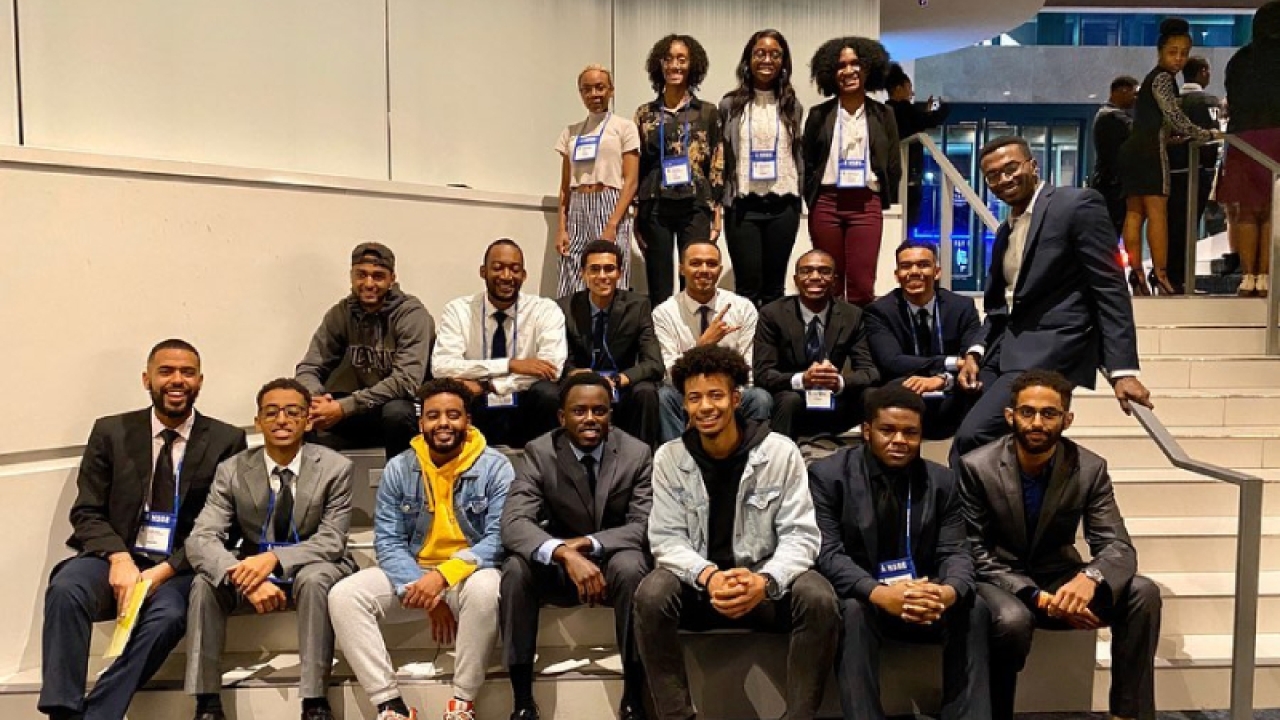
National Society of Black Engineers
The UC Davis chapter of National Society of Black Engineers works to increase the number of culturally responsible Black engineers who excel academically, succeed professionally, and positively impact the community.
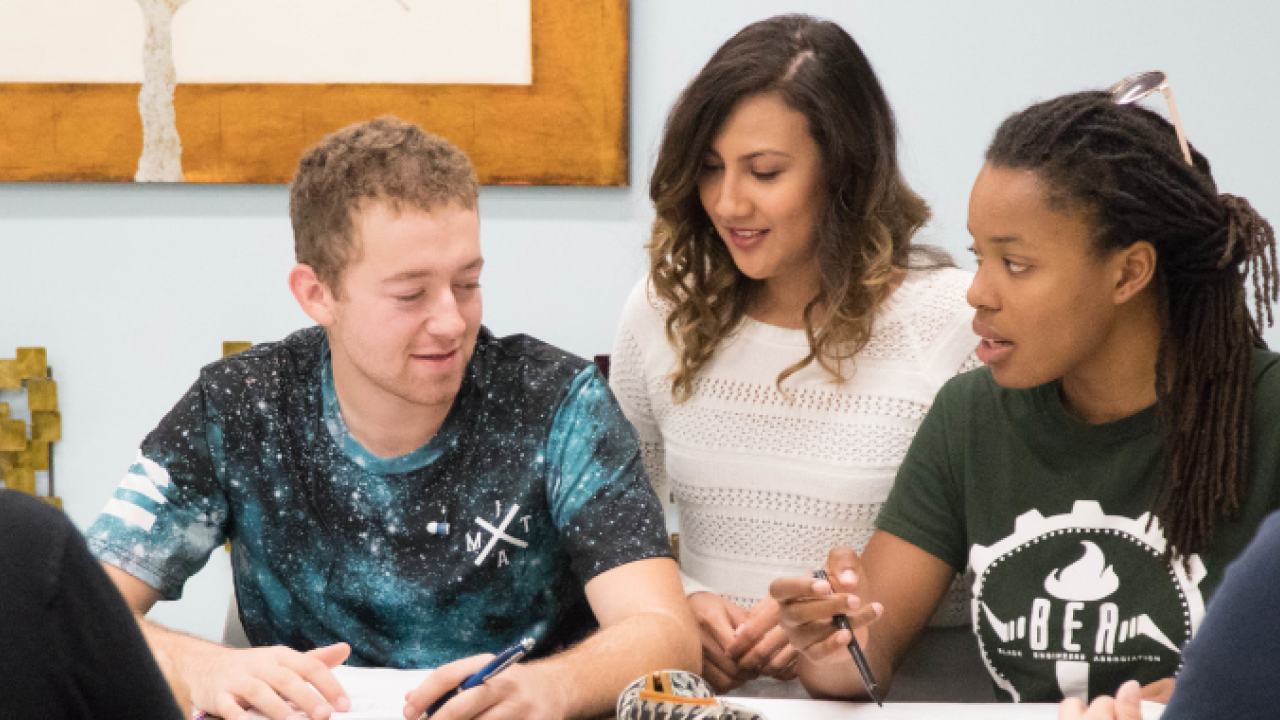
LEADR
LEADR is a comprehensive support program designed to empower engineering students who are committed to academic and professional excellence and seek opportunities to grow as leaders in fostering inclusivity and expanding access within engineering and tech fields.
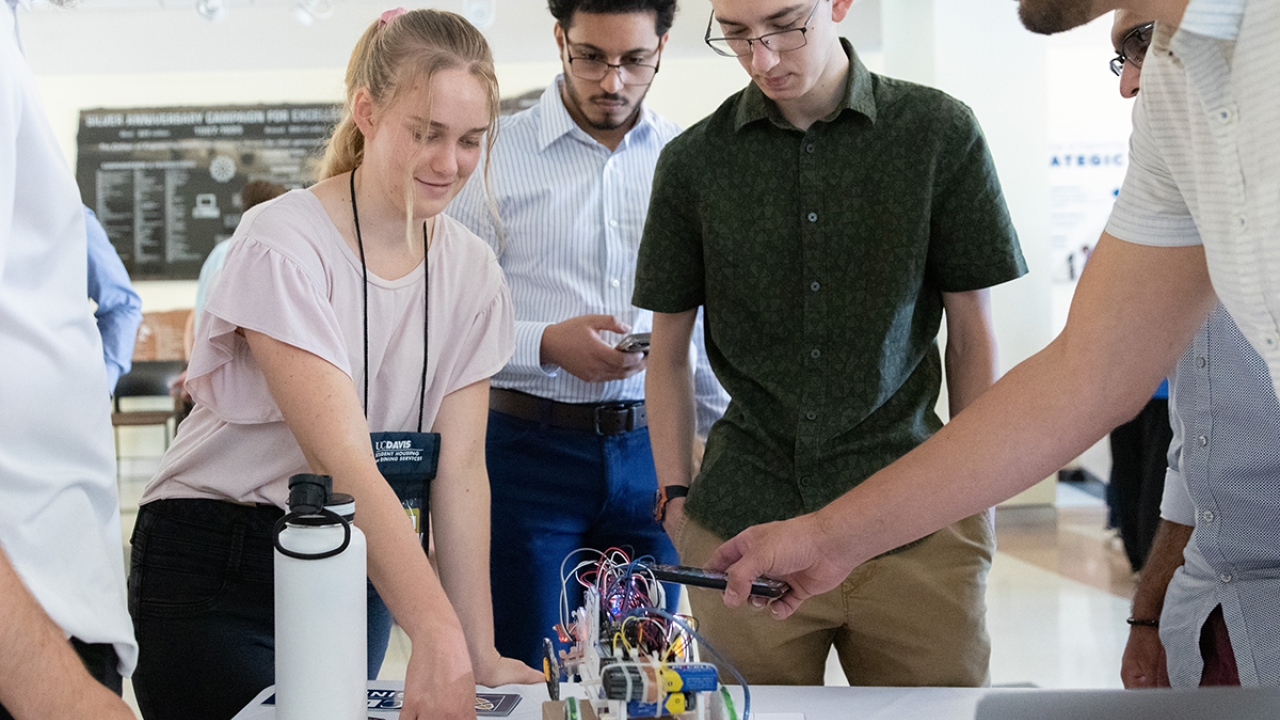
AvenueE
AvenueE (Avenue to Engineering Transfer Student Program) is designed to help community college transfer students smoothly transition to UC Davis, and ultimately, a career in engineering or computer science.


